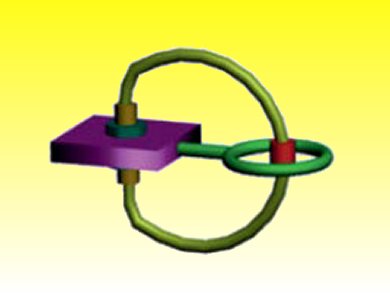Mechanically interlocked molecules, such as catenanes, rotaxanes, and knots, based on molecular recognition and self-assembly have attracted interest because of their fascinating topological features and potential as components of molecular devices. Catenanes are comprised of two or more interlocked macrocyclic components, in which the macrocycles are not linked covalently to each other. Pretzelanes are bridged [2]catenanes that are connected by covalent bonds.
Porphyrin chromophores are versatile components for the construction of rotaxanes and catenanes because of their remarkable spectroscopic and electrochemical properties. Examples that incorporate porphyrin by axial ligation are, however, extremely limited.
Yu Liu and co-workers from Nankai University, China, have reported the synthesis of a [2]catenane and a pretzelane containing a Sn–porphyrin dihydroxide component. The interlocked molecules were obtained by the axial ligation of Sn–porphyrin dihydroxide with the resorcinol moieties of both termini in an aromatic dialkylammonium spacer. The new synthetic strategy adopted by the authors offers the potential for the design and synthesis of even more intricate systems that incorporate interlocked components.
Image: © Wiley-VCH
- A [2]Catenane and Pretzelane Based on Sn–Porphyrin and Crown Ether
M. Han, H.-Y. Zhang, L.-X. Yang, Z.-J. Ding, R.-J. Zhuang, Y. Liu,
Eur. J. Org. Chem. 2011.
DOI: 10.1002/ejoc.201101145




